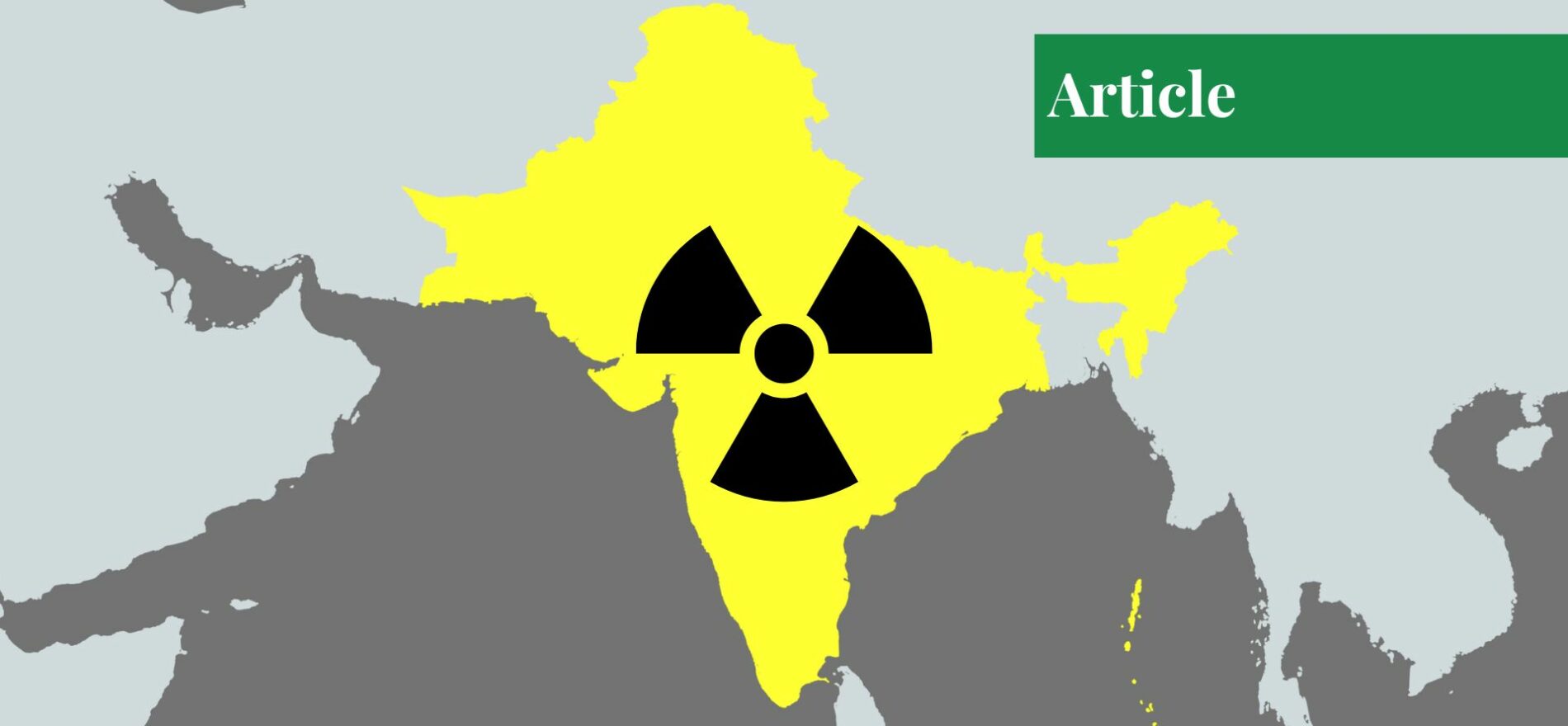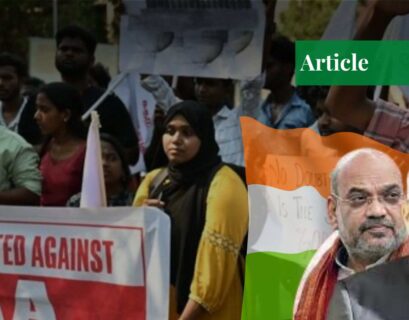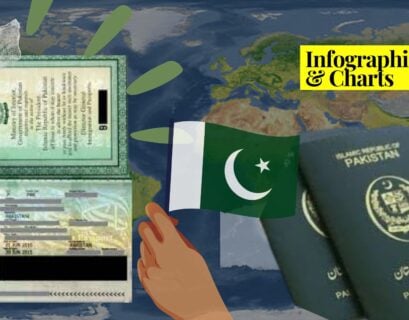Brigadier Syed Mushtaq Ahmed (Retd) has extensive experience in areas of national security, intelligence and strategic issues. He has worked as a Senior Research Analyst in a strategic organisation and has a niche for writing research articles and analytical assessments, specializing in counterintelligence, counter-terrorism and nuclear security.
Historical Perspective
The relationship between Pakistan and India in South Asia has historically been at a stalemate. While there is an acceptability issue (of Pakistan) from the Indian side, it is an issue of survival from Pakistan’s side. This paradox defines the nature of the relationship between the two states.
The rocky relationship has seen extreme highs and lows over the last 75 years – ever since the partition took place in 1947. While there have been brief periods of warmth/détente like the Nehru-Liaquat Pact (Delhi Pact 1950), Zia cricket diplomacy (Ajmer 1987), Nawaz-Vajpayee embrace (Lahore Declaration 1999), and Musharraf-Singh handshake (Agra Summit 2001). (giving many people hope for long-term peace).
The above periods were almost immediately transformed into conflicts, spurred by compulsive military adventures (Kashmir liberation war of 1948, Operation Gibraltar / Grandslam of 1965, and the Kargil-1999), covert war, false flag operations (as a pretext for cross-border punitive actions), destabilization through grey zone wars, and the obstinacy of India’s political leadership, driven by militant expedient ideology to browbeat its arch-rival (Pakistan).
The perpetual state of an estranged relationship between the two arch-rivals is hence there to stay – at least for the foreseeable future. This negatively affects regional security and stability continually. Whether or not it will lead to a fourth round (of a war-like scenario) is an inquisition that interests the policymakers and the public alike.
Futility of Conflict
Pakistan and India have already fought three and a half wars (1948, 1965, 1971, and the 1999 Kargil conflict), have engaged in many border skirmishes, and even experienced military stand-offs.
While the first three are considered major conventional wars, the fourth was limited in scale, content, and intensity – restricted to a war zone only – primarily because of the nuclear overhang. The Pakistan-India conflict hence invalidated the aphorism that nuclear powers don’t go to war with one another. Kargil dented the assumption that the nuclearization of South Asia (1998) will lead to the possibility of a full-scale war.
Where advocating for the use of nuclear weapons is considered a taboo, and is despised and rejected by the international community (no matter the justification), it nonetheless inversely encourages the aggressor to undertake a limited conflict. Be that as it may, the possibility of a limited conflict notwithstanding, the mere futility of the inconclusive outcome of such conflicts, makes these the least preferred option. But, then this option, too, has almost been foreclosed, because of the introduction of the Tactical Nuclear Weapons (TNWs) instituting a Full Spectrum Deterrence (FSD) regime.
However, the robustness of the deterrence remains shaky, given Indian political and military leaders’ cavalier approach of fancying military adventurism, regardless of the existence of Pakistan’s nuclear capability. The linear geography of Pakistan, with major cities, industries, communication arteries (railway tracks and highways), and the infrastructure (dams, powerhouses, bridges, etc.) situated/running close to the international border, lowers the nuclear threshold.
Any major damage, destruction, loss of crucial territory, or major operational reversal will surely invoke the risk of operationalization of nuclear weapons. The nuclear dynamic has hence changed the adversarial tone and context of relationships in South Asia.
South Asian Incompatible Strategic Thought
The conflicting South Asian strategic thought is influenced by varying ideologies. Indian thinking has transformed from Nehruvian influence to the Hindutva ideology of exclusivity and hawkishness. The former (Nehruvian) has internal bearings advocating Hindu-ness to the exclusion of all other segments, and the latter (Hindutva) has an external expansive orientation, underscored by Ajit Doval’s Defensive Offense Doctrine and the adaptation of offensive military strategies i.e. Land-Warfare Doctrine (LWD) 2018, hybrid warfare, and surgical strike options.
LWD is aimed at fighting a two-front war (i.e. with Pakistan and China). While it entails securing the frontier through deterrence along the China border, it is arrayed heavily against Pakistan to destroy its Centre of Gravity (CoG) and achieve spacial gains. Indian leadership’s military jingoism and expansionist designs are at variance with the behavior of a responsible Nuclear Weapon State (NWS). Their sinister war-mongering and Pakistan fixation make them more Pakistan-centric than Pakistan is ‘India focused’. Indian doctrinal transition from being ‘strategic defensive’ to ‘strategic offensive’ is an outcome of its grandiose global aspirations and the Indo-US strategic embrace that enabled it to undertake an ambitious modernization of its armed forces.
The geo-strategic compulsions and imperatives of the West propping up India as a counterweight to China have tilted the South Asian security balance with transcending effects on the unilateral arms race. India’s military spending spiked from $71.1 billion in 2019 to $79.9 billion in 2022, while Pakistan’s defense budget rose from $10.3 billion to $12 billion during the same period. The resultant effect is an add-on offensive punch and a stark aggressive orientation in its military thought process – the trans-border strikes and proxies in Pakistan are its vivid expressions.
The size of India’s conventional military strength, its economic prowess, and cutting-edge technological advancement also incite dynamism in Pakistan’s strategic thought process in exploring innovative or asymmetric response options. Pakistan’s perspective of Indian hegemonic expansionist designs weighs heavily in the mind of its analysts/policymakers who are working towards transforming it into a security state.
The abiding adversarial relationship is characterized by situational, perceptional, and physical asymmetries, which are further exacerbated by the Indian leadership’s disdain and propensity of resorting to a conflictual course in a bid to exploit space for conflict within the prevailing strategic equation.
The notional paradox wherein Pakistan’s belief that their nuclear weapons have curtailed Indian military options, and the Indian belief that despite Pakistan’s nuclear capabilities, a limited conventional conflict can be fought and won, is thus fraught with risks.
Regional Dynamics
A socially and economically weak, and fragmented nuclear Pakistan, with abiding threats to its security, stability, and the continual technology denial by the West will further push it eventually into the Chinese/Russian camp, despite Western efforts to keep it shackled through International Financial Institutions (IFIs).
India’s vulnerability to the Terrorism redux (threat posed by AQIS, IM* among others), and its weak response capability due to the intrinsic security structure weaknesses, fissiparous regional tendencies, ongoing raging insurgencies in more than half of its union territories, and the endemic poverty among the teeming millions, impels it to put Pakistan in the spot.
The Indian policy of Pakistan bashing and sneering at Pakistan for sponsoring terror is used as a political ploy to gel its fractured polity/union. Recent China-India border clashes with some significant Indian military reverses in the Ladakh (2020) and Arunachal Pradesh (2022) regions have exposed its military response capability. Despite Indian efforts to improve its military posture in the disputed regions, it is no match to the Chinese juggernaut, making its inability to stop the potential Chinese threat obvious.
Notwithstanding the burgeoning Indo-US strategic partnership, India’s reticence in fully committing to any anti-China security alliance despite the QUAD membership is evidenced by its unwillingness to fully commit to the anti-China bidding by the US. This is the same as India’s reluctance to align completely with US/EU on the Ukrainian issue. New Delhi’s non-alignment impulse keeps it away from completely supporting the West on any multilateral forum and pushes it into such groupings as the SCO and BRICS. The Indian proverbial neutrality hence puts its reliability and trustworthiness in question.
The resurgence of terrorism is back with a vengeance in Pakistan as a result of the exploitation of its weak inner front by NDS and RAW, finding its devastating expression recently in the settled areas of Pakistan. The back-to-back recent spate of terrorist attacks in a Police Mosque in Peshawar (KPK), a Police Station in Mianwali (Punjab), and Karachi (Sindh) Police Headquarters within weeks is indicative of terrorist regeneration and outreach.
While Pakistan’s armed forces have the capacity and capability to root this menace out once again – the Indians may be found wanting in response to the incidence, considering that, “India is one of the most terror-prone countries with death toll only second to Iraq”, according to a report published by Counter Terrorism Centre in Washington.
The terror continuum needs therefore to be tackled jointly than as an adversarial policy implement against each other. The American interest to free India from ‘Pakistan worries’ by goading Pakistan into a servile status vis-à-vis India, and the bolstering of Indian efforts to build strength and muscle as a ‘China counterweight’ induces chasm and imbalance in the security calculus of South Asia.
Effects of an Unstable Pakistan
A weak, unstable, and fragmented Pakistan has an adversarial effect on regional stability. Pakistan’s stability is crucial for the region, and for much of the World. Historically, the North-West sub-continental region (today’s Pakistan) has acted as a buffer to the Indian landmass from successive invaders.
Pakistan’s geo-strategic location not only insulates the sub-continent from restive Afghanistan, a troubled Iran, and the turbulent Middle East region, it allows transnational connectivity and much-needed diplomatic linkages with all countries in the region, making it an important regional arbiter. Efforts for an Iran-Saudi Arabia détente, successful US-Taliban parleys, and later safe extrication of US/NATO forces from Afghanistan are but a few feats to its recent credit.
Contrarily, Pakistan’s instability would let the expanding arc of terrorism go unchecked from within and without. The ongoing politico-economic turbulence in the country adds to the stability woes and prevents the present dispensation to wrest neither the Tehrik-e-Taliban Pakistan (TTP) resurgence nor the multitude of pressing socio-economic challenges. Launching a meaningful diplomatic initiative with its immediate neighbors in the East and West (India and Afghanistan) seems too far off.
Amid the prevailing internal uncertainty and regional instability, the Pakistan armed forces remain the only force that stands as a bulwark against the terrorist threat – and as a stabilizing force to the emerging regional challenges. Any attempt at weakening this force is tantamount to unleashing the terrorist conglomerate (AQ, ISIS, ISK, ETIM, IMU, TTP, and affiliates) operating with impunity in the Middle East, the West, Central Asia, and the subcontinent.
Pakistan’s pivotal geo-political role in South Asian calculus and its effective leverage over Afghanistan necessitates a stable politico-military dispensation. Pakistan’s lien over its western neighbor will have a sobering effect on an alienated Afghanistan, currently having little or no interface/acceptability with the outside World. Pakistan may turn out to be an Indian Vietnam, in case it is drawn into a protracted war aimed at its breakup and destruction.
The indomitable resilience of its nationalist population, a battle-hardened military, functional nukes, intrinsic strength, and the resolve of a 220 million-strong nation to unify in face of a looming threat with deep-seated anti-US-Indian-Israel sentiment as a force multiplier, makes it a tough nut to crack. Even if the nukes are neutralized, there would still be some left to give the aggressor the taste of its own medicine.
Pakistan Response Options
Pakistan’s defensive effort has been security driven with no intention or the capability to challenge the US or its allies. Pakistan’s strategic capability is entirely South Asia specific driven by the 3-Rs: Rationality, Restraint, and Responsibility to build a Full Spectrum Deterrence (FSD) affording the due dividends of:-
- Compensating for the conventional asymmetry.
- Giving much-needed flexibility to pursue the internal fight against terrorism without pulls/pressures from the Eastern front …. and;
- Enhancing political stature and respect, but most of all;
- Not only foreclosing the option of a fourth round but precluding the space for limited conflict too.
The centrality of Pakistan’s nuclear capability, therefore, lies at the core of Pakistan’s security paradigm and is a guarantor of its security and survival – vis-à-vis India. To institute a credible deterrence regime some of the key considerations are:-
- A preparedness to initiate the first use of nuclear weapons to dissuade any aggressor from initiating a conflict. As Nasarisation of the battlefield has compelled the Indians to revisit its strategy of Cold Start Doctrine (CSD) / Proactive operations (PAO), it should also force it to reevaluate its willingness to use nuclear weapons – if it comes to that, since deterrence and nuclear war-fighting are mutually exclusive and interchangeable.
- Empirical evidence suggests that keeping the nuclear policy ambiguous has served well in attaining a strategic capability, despite heavy odds and invasiveness, and hence its efficacy on that count.
- However, any ambiguity in the nuclear policy of using nuclear weapons encourages the aggressor to fancy adventurism – a policy prone to risks – therefore the options available are:
- Mix and match the notions of “declaratory use and ambiguity” – affording greater flexibility to attend to both regional and international needs & dictates.
- Instead of responding to India’s enduring aggression, as part of an action-reaction syndrome, Pakistan may have to take charge of Indians indicating the willingness to affect a MAD (Mutually Assured Destruction) regime in case of any military transgression.
- And absolute imperative need for defining zero intolerance to aggression across LoC/international borders to strengthen/reinforce the value of deterrence.
Considerations and the Way Forward
With no letup in the Ukraine crises, the European and the US economies are already in recession. The escalating living cost, soaring fuel, and energy prices, rising unemployment, and food (grain) shortages (due to the Ukrainian food basket devastation) are all taking a toll on war sustenance. Further deterioration will not only take Europe into one of the worst recessions of the century but has the potential to suck it deep into an inextricable war. While the global North is up in flames, can the world afford another conflagration in the global South – already an area of a restive neighborhood?
A conflict over Kashmir, which has the potential to quickly transform into a nuclear Armageddon given the bent-up hatred and deep-seated animosities, is, therefore, an absolute non-starter. Even if there is no conflict, the ‘no war, no peace’ situation is a zero-sum game, which fosters grey zone wars, shuns connectivity, blocks trade, and retards the potential of an Indian market (with a population of one billion).
A thriving economy is stifled because of the lack of connectivity to the resource-rich Afghanistan and Central Asian Republics. Forced to take a circuitous route through Chahbahar (Iran) – a straight route through Pakistan would see Indian trucks leaving Amritsar (India) in the morning, arriving midday in Kabul (Afghanistan), and returning in the evening. The trans-regional economic connectivity is hence premised on a peaceful South Asia.
The US, UK, and the EU need to emulate the Chinese example of shifting from geo-politics to geo-economics by way of soft power initiatives through trans-continental connectivity, constructing perceptional bridges between communities/blocs, building trade corridors on the lines of the Chinese Belt and Road Initiative (BRI), and create an economic commonwealth of regions.
The US has to start ‘walking the talk’ on the offers made by the past Presidents (Bill Clinton, and Trump) of mediating dialogue between the two South Asian rivalsand lead the rapprochement in the sub-continent. The US policy to prevent conflict in the subcontinent can be effective only if the Pakistan–India peace process is kick-started through a piece-by-piece approach of addressing solvable lingering issues within a temporal frame, before taking on the big-ticket difficult issues of Kashmir and terrorism, etcetera.
After all some of the smaller issues (Siachin, Sir Creek, and bilateral trade) on which the consensus exists, only require a stamp of agreement, which could prove to be the first drop of the rain, transforming the atmospherics in their hitherto cold relations. Pakistan’s stability is a sin qua non for regional stability. The US will do a lot of good to itself and the region if it retracts from a confrontationist approach and the machinations of regime changes etc., and instead genuinely starts working on a perceptional change.
- An inclusive approach of assistance/cooperation to stabilize Pakistan’s flood-wrecked economy through socio-economic assistance (not loans) as an essential first step. After all, Pakistan paid a heavy price in the US war on terror with blood and money, incurring a loss of half a million lives and a loss of over $150 billion to its fragile economy.
- Following on its heels, impress upon Pakistan to bring in the much-needed internal order and stability, as a precursor and prerequisite for reinitiating a peace process with India.
- The resolution of the intractable political issues through Western facilitation should be followed up in earnest thereafter, which will undoubtedly improve the image of the superpower and may even counterbalance the Pak-China equation. The Indus Water Treaty, facilitated by the World Bank (1960), and the Tashkent Agreement (1966) by the erstwhile Soviet Union, are the abiding testaments.
- As security and economic stability are closely intertwined – the said peace initiatives will help in the resolution of issues between Pakistan and India, which means that the countries could then spare and invest their resources on the socio-economic uplift of their respective countries, rather than on arms race dictated by the need for defense and security.
If you want to submit your articles, research papers, and book reviews, please check the Submissions page.
The views and opinions expressed in this article/paper are the author’s own and do not necessarily reflect the editorial position of Paradigm Shift.



















